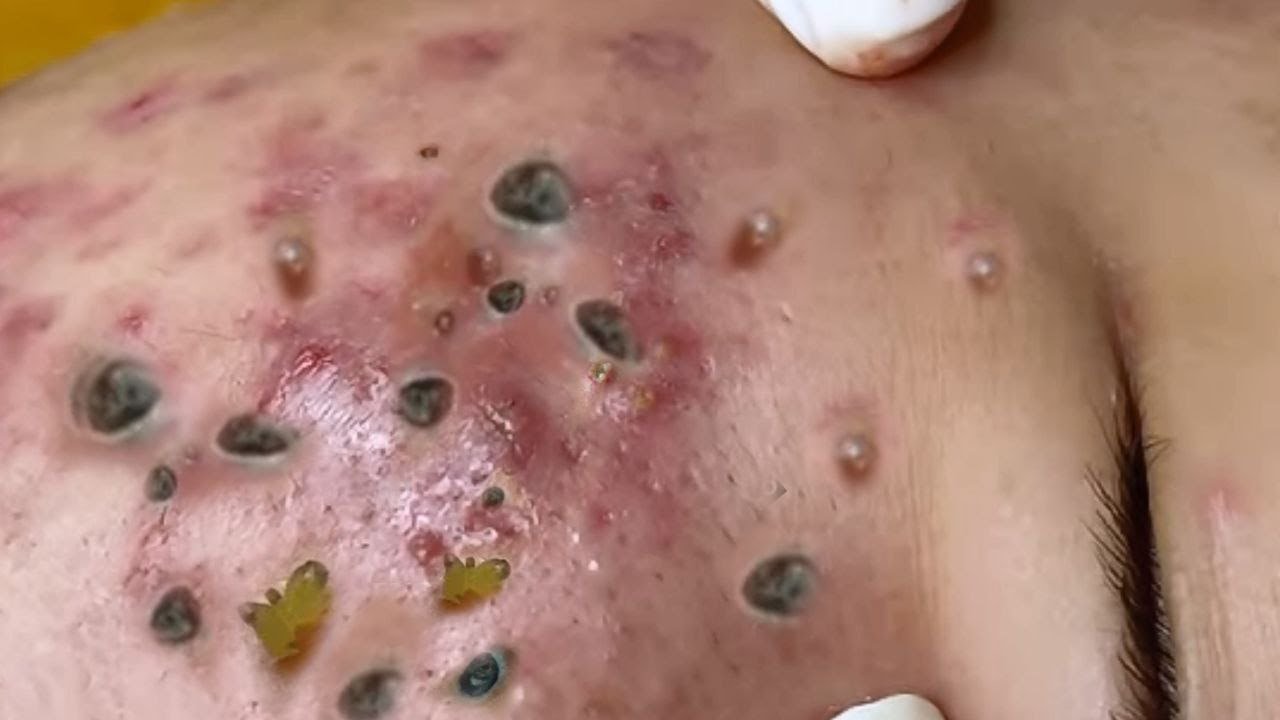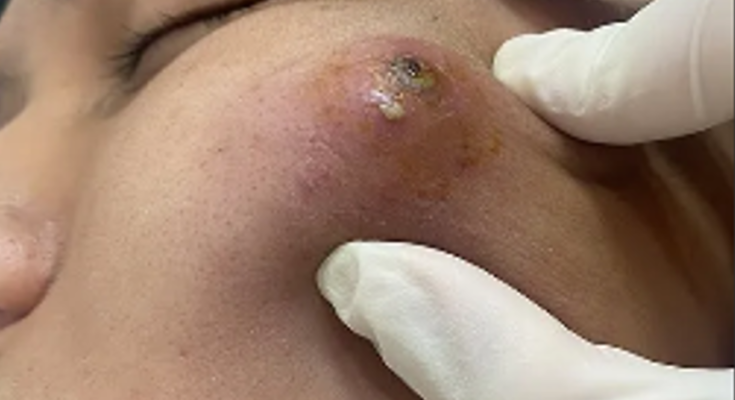Blackheads are a type of acne that appear as small, dark spots on the skin, usually on the face, nose, and forehead. They form when hair follicles become clogged with excess oil (sebum), dead skin cells, and debris. Unlike whiteheads, which are closed, blackheads occur when the clogged pore is open, and the exposure to air causes the oil to oxidize and turn dark.
Removing blackheads can be done through various methods:
- Cleansing: Regular washing with a gentle cleanser can help reduce excess oil and prevent clogged pores.
- Exfoliation: Using exfoliants, such as scrubs or chemical exfoliants (like salicylic acid), can remove dead skin cells and prevent clogging.
- Pore strips: These strips are designed to remove blackheads by adhering to the oil and pulling them out when removed. However, they can be harsh on the skin.
- Extraction tools: Professional dermatologists can safely extract blackheads using specialized tools to avoid skin damage.
Prevention of Blackheads

To prevent blackheads, it’s essential to maintain a skincare routine:
- Cleanse twice a day to remove excess oil and dirt.
- Use non-comedogenic products, which are less likely to clog pores.
- Avoid touching your face to reduce the transfer of oils and bacteria from your hands.
- Keep your skin moisturized, as dehydration can lead to more oil production.
Treatment for Blackheads
For persistent blackheads, over-the-counter treatments containing salicylic acid, benzoyl peroxide, or retinoids can help treat clogged pores. If blackheads don’t improve, consulting a dermatologist is recommended for professional advice or prescription treatments.
1. Cleansing
-
Use a gentle cleanser: Cleanse your face twice a day with a mild, non-comedogenic (won’t clog pores) cleanser. This helps remove dirt, oil, and impurities that can contribute to blackhead formation.
-
Exfoliate regularly: Use a gentle exfoliant 2-3 times a week to remove dead skin cells. Look for products with salicylic acid or glycolic acid. These can penetrate the pores and help clear them out.
2. Topical Treatments
-
Salicylic acid: This is one of the best ingredients for treating blackheads. It’s a beta hydroxy acid (BHA) that exfoliates the inside of pores, helping to clear blockages.
-
Retinoids (Retinol): Retinoids help promote cell turnover, prevent clogged pores, and can reduce the appearance of blackheads. Start with a lower strength if you’re new to retinoids.
-
Benzoyl peroxide: Though more often used for treating acne, benzoyl peroxide can also help clear blackheads by reducing the bacteria that may contribute to them.
3. Masks and Pore Strips
-
Clay masks: Clay masks, such as those containing bentonite or kaolin, help absorb excess oil and impurities from the skin, reducing blackhead formation.
-
Charcoal masks: Activated charcoal can also help draw out impurities and excess oil, improving the appearance of pores.
-
Pore strips: These are designed to pull blackheads from your nose or other areas. However, they may not provide long-term benefits and can irritate sensitive skin, so use them sparingly.
4. Extraction (Professional Treatment)
-
Professional extractions: A dermatologist or licensed esthetician can perform manual extractions using sterile tools to safely remove blackheads. This is often the most effective way to remove stubborn blackheads without causing scarring.
5. Moisturizing
-
Non-comedogenic moisturizer: Even oily skin can be prone to blackheads, so it’s essential to moisturize regularly with a lightweight, oil-free moisturizer to keep your skin balanced.
6. Avoid Popping
-
While it can be tempting, popping or squeezing blackheads can push the clog deeper into the skin, leading to inflammation or scarring. It’s best to leave extractions to the professionals.
7. Sun Protection
-
SPF: Sun exposure can lead to skin damage and worsen acne. Make sure to apply a broad-spectrum sunscreen daily to protect your skin.
By following these steps consistently, you can help manage blackheads and improve the overall appearance of your skin. If over-the-counter treatments don’t work, you might want to consult a dermatologist for stronger options or personalized treatment plans.
